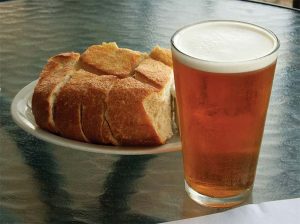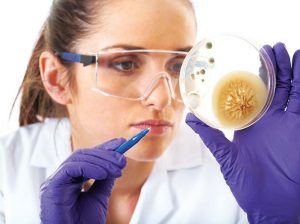Candida overgrowth can cause several medical conditions. That being said, the Internet is filled with a lot of bad, misleading, and just plain wrong information about Candida. It is important to note that most of the information about Candida on the internet is supplied by multimillion dollar companies whose primary goal is to sell you their anti-Candida product.
There are also some in the natural and integrative health community who in good faith believe a lot of the hype these companies create, they then perpetuate the companies propaganda when they share their knowledge with others. Those of us who believe in natural health and integrative medicine, but want to assure we pass on accurate information, strive to take the claims backwards, and look at the original research. It is our job to figure out if a claim is really true, or if it was just the creation of someone trying to sell a product or a book. When it comes to Candida it is nearly impossible for the average person to separate fact from fiction.
Let’s talk about some of the myths and misconceptions about yeast.
MYTH #1: Yeast is unnatural.
FACT: Yeast are single celled microorganisms that are found all over in nature. Yeast can make their own energy so they do not need sunlight to grow, and they can grow in environments with low levels of oxygen. Most people do not know this, but there are over 1,500 different species of yeast: Some yeast are opportunistic pathogens (cause infections only when the environment is right or immune system is compromised) such as Candida Albicans. Some yeast do not affect our health in any way, such as (Sacharomyces Cervisiae) baking yeast. And some yeast have been shown to be beneficial to our health such as Sacharomyces Boulardii.
MYTH #2: Only women get yeast infections.
FACT: While many people think yeast infections are a woman’s problem, this is far from the truth. Candida is considered normal flora on skin, in the mucus membranes of the respiratory tract, gastrointestinal tract, and in the female genital tract. Most of the opportunistic yeast pathogens(potentially harmful) are in the genus Candida, with Candida Albicans, being by far the most common. Yet, most of the time, the Candida is living in a healthy balance with our immune system and other “good” microorganisms keeping it in check. That being said, the
Candida is looking for an opportunity for a weekend immune system, or for the chance to overtake the “good” microorganisms. This can occur in men, women, children and adults. For example:
- A 10 year old boy with asthma takes an inhaled steroid to help control his asthma and develops oral thrush. This happens because the inhaled steroid inhibits the local immune system, allowing Candida to overgrow. To prevent this, he should rinse out his mouth after using the steroid inhaler, so that the excess steroid is washed away.
- A woman takes some antibiotics because of a sinus infection and develops a vaginal yeast infection. This happens because the antibiotics kill both the bad bacteria causing the sinus infection, but also the good bacteria in the vagina that help keep the Candida in balance.
- A baby gets a skin yeast infection in the rolls on his legs because it is a warm moist place, that does not have much oxygen, this is the perfect environment for Candida to grow, but not a great environment for other healthy microorganisms.
MYTH #3: All yeast is bad yeast.
FACT: Interestingly, some yeast are good for us. For example, there is a species called “Sacharomyces Boulardii” that has been shown to help maintain and even restore a healthy normal flora in the gastrointestinal tract. It has been shown to reduce the symptoms of acute diarrhea, prevent Clostridium difficile, help people who have irritable bowel syndrome, reduce diarrhea from antibiotics, reduce traveler’s diarrhea, and reduce HIV/AIDS associated diarrheas. It’s important to remember that not all yeast are bad.
MYTH #4: A spit test can indicate a yeast infection.
FACT: There is a fake “test for Candida” circulating in the internet called the spit test. Supposedly, first thing in the morning, you are to spit into a glass of water. If after several minutes there are stringy tendrils going down into the water, then you supposedly have a yeast infection. The truth is that if your mucus is thick, it will form these tendrils; it has nothing to do with yeast – and your mucus will be thicker if you are dehydrated with a dry mouth (as most people are first thing in the morning).
 MYTH #5: Yeast in foods like bread and beer cause yeast infections.
MYTH #5: Yeast in foods like bread and beer cause yeast infections.
FACT: You might have read claims that you can get yeast infections from the yeast in beer and bread. This is not true, the type of yeast used in brewing and baking are completely different than the yeasts that cause infections. That being said, carbohydrates (which are found in beer and bread) can feed yeast. And consuming too much bread, beer, and other carbohydrates can cause health problems, but those problems are not from the yeast that are in them.
MYTH #6: If you have yeast antibodies, you have a yeast infection.
FACT: There are companies that market anti-body tests to see if you have antibodies against yeast. This is bogus because we all have yeast on our bodies, so there is a good chance our body has antibodies to yeast. This does not mean we have a harmful infection, it just means that your immune system has been exposed to yeast, and is ready to fight it off if we develop an infection.
MYTH #7: Untreated yeast infections will allow yeast in your blood.
FACT: There are people on the internet who claim that if you do not treat the yeast in your digestive system, it will break down the lining of your intestines, which allow toxins and Candida to enter your blood stream. They then claim the Candida in your blood stream cause all kinds of chronic medical problems. This notion of Candidemia causing chronic disease is false. If you have yeast in your blood stream, then you will be very sick,and should be in the hospital.
MYTH #8: All vaginal irritation is yeast irritation.
FACT: Interestingly, research has shown that even doctors over diagnose yeast infections. People have a tendency to attribute all vaginal irritation and discharge to a vaginal yeast infection. Likewise, people also have a tendency to attribute all white tongues to thrush. That being said, yeast infections and thrush are relatively common in certain populations. So if you have evidence of a yeast infection, you should treat it. However, if you or your practitioner think you have a yeast infection, and it is not responding to treatment, then it is important to use further testing to confirm if you have a yeast infection or not. You could be spending a lot of time and effort treating an infection that is not there, and ignoring the main cause of your problems.
MYTH #9: Yeast is a cause of most chronic diseases.
FACT: Some people want to blame all (or most) chronic diseases (i.e. diabetes, autoimmune disorders, fatigue, mental illness, etc.) on Candida even though there is not any good evidence showing that these conditions are caused by Candida (and there is a lot of good evidence debunking the theories that claim they do). The real problem arises when people spend a lot of time, money, and effort in trying to treat a yeast infection that simply is not causing any problems, while at the same time not looking into the real causes of their problems.
 MYTH #10: You can be cured of candida overgrowth.
MYTH #10: You can be cured of candida overgrowth.
FACT: Specific episodes of Candida overgrowth (infections) are curable. Some people are cured with a relatively short course of treatment, while other people require prolonged treatment. But Candida is in the environment, so once you have cured yourself, there is a good chance you will be re-colonized. The key in that case is to do things to help promote a healthy immune system, and a healthy balance of normal flora microorganisms.
Prevent Yeast Infections with These Simple Steps.
If you are concerned about developing a yeast infection, or if you have a history of frequent yeast infections, then doing things to help support a healthy immune system and a health balance of normal flora microorganisms. Things you can do to prevent Candida overgrowth include:
- Only use antibiotics when they are absolutely needed.
- Take a probiotic daily.
- Stay at a healthy weight.
- Exercise on a regular basis.
- Get adequate sleep.
- Avoid promiscuous relationships.
- Don’t smoke (anything).
- Don’t use recreational drugs.
- Keep chronic medical conditions like diabetes under good control.
- Avoid things that feed yeast such as excessive sugars, other carbohydrates and alcohol.
- Avoid other activities and exposures that can compromise your immune system.


